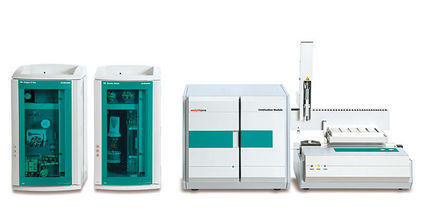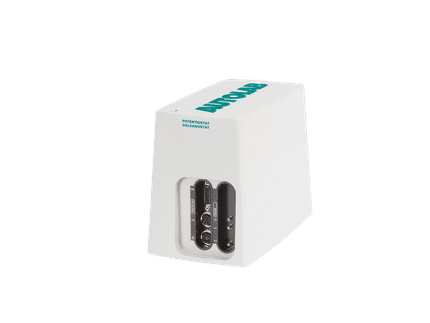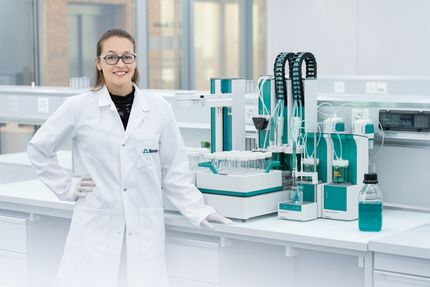| Vitaly L. Ginzburg
|
|---|
| Born | October 4 1916 (1916-10-04) (age 96)
Moscow, Imperial Russia |
|---|
| Residence | Russia |
|---|
| Nationality | Hebrew |
|---|
| Field | Physicist |
|---|
| Institutions | P. N. Lebedev Physical Institute |
|---|
| Alma mater | Moscow State University |
|---|
| Academic advisor | Igor Tamm |
|---|
| Known for | Plasmas, superfluidity |
|---|
| Notable prizes | Nobel Prize in Physics (2003)Wolf Prize in Physics (1994/95) |
|---|
| Religious stance | Secular Jewish |
|---|
Vitaly Lazarevich Ginzburg (Russian: Виталий Лазаревич Гинзбург; born October 4 1916 in Moscow) is a Russian (formerly Soviet) theoretical physicist and astrophysicist, a member of the Russian Academy of Sciences, the successor to Igor Tamm as head of the Department of Theoretical Physics of Academy's physics institute (FIAN), and an outspoken atheist.[1]
Life and work
He was born to a Jewish family in Moscow in 1916 and graduated from the Physics Faculty of Moscow State University in 1938, defended candidate's (Ph.D.) dissertation in 1940 and doctor's dissertation in 1942. Since 1940 up to present time (as of 2004) he works in the P. N. Lebedev Physical Institute in Moscow. Among his achievements are a partially phenomenological theory of superconductivity (Ginzburg-Landau theory), developed with Landau in 1950, the theory of electromagnetic wave propagation in plasmas such as the ionosphere, and a theory of the origin of cosmic radiation. In the 1950s he played a key role in the development of the Soviet hydrogen bomb.
Ginzburg identify himself as a secular Jew and since the collapse of communism in the former USSR, he is very active in the Jewish life, especially in Russia, where he served at the board of directors of the Russian Jewish Congress. He's also well known for fighting anti-Semitism and supporting the state of Israel.[2].
Honors
- USSR State Prize in 1953
- Lenin Prize in 1966
- Gold Medal of the Royal Astronomical Society in 1991
- Wolf Prize in Physics in 1994/5
- Lomonosov Gold Medal in 1995
- Nobel Prize in Physics in 2003, together with Alexei Alexeevich Abrikosov and Anthony James Leggett.
References
- ^ Nikonov, Vyacheslav (2004-09-30). "Physicists have nothing to do with miracles". Social Sciences (003): 148–150. Retrieved on 2007-09-09.
- ^ Vitaly Ginzburg, By Avi Hein, at the "Jewish Virtual Library"
| Wolf Prize in Physics Laureates |
|---|
Chien-Shiung Wu (1978) •
George Uhlenbeck / Giuseppe Occhialini (1979) •
Michael Fisher / Leo Kadanoff / Kenneth G. Wilson (1980) •
Freeman Dyson / Gerardus 't Hooft / Victor Weisskopf (1981) •
Leon M. Lederman / Martin Lewis Perl (1982) •
Erwin Hahn / Peter Hirsch / Theodore Maiman (1983) •
Conyers Herring / Philippe Nozieres (1984) •
Mitchell Feigenbaum / Albert J. Libchaber (1986) •
Herbert Friedman / Bruno Rossi / Riccardo Giacconi (1987) •
Roger Penrose / Stephen Hawking (1988) •
Pierre-Gilles de Gennes / David J. Thouless (1990) •
Maurice Goldhaber / Valentine Telegdi (1991) •
Joseph H. Taylor, Jr. (1992) •
Benoît Mandelbrot (1993) •
Vitaly Ginzburg / Yoichiro Nambu (1994) •
John Wheeler (1997) •
Yakir Aharonov / Michael Berry (1998) •
Dan Shechtman (1999) •
Raymond Davis, Jr. / Masatoshi Koshiba (2000) •
Bertrand Halperin / Anthony Leggett (2002) •
Robert Brout / François Englert / Peter Higgs (2004) •
Daniel Kleppner (2005) •
Albert Fert / Peter Grünberg (2006)
|
Agriculture |
Arts |
Chemistry |
Mathematics |
Medicine |
Physics
|
| Nobel Laureates in Physics |
|---|
Eric Cornell / Wolfgang Ketterle / Carl Wieman (2001) •
Raymond Davis / Masatoshi Koshiba / Riccardo Giacconi (2002) •
Alexei Abrikosov / Vitaly Ginzburg / Anthony Leggett (2003) •
David Gross / David Politzer / Frank Wilczek (2004) •
Roy J. Glauber / John L. Hall / Theodor W. Hänsch (2005) •
John C. Mather / George Smoot (2006) •
Albert Fert / Peter Grünberg (2007)
|
Complete roster |
(1901-1925) |
(1926-1950) |
(1951-1975) |
(1976-2000) |
(2001-2025)
|
| Persondata
|
| NAME
| Ginzburg, Vitaly L.
|
| ALTERNATIVE NAMES
|
|
| SHORT DESCRIPTION
| Russian Physicist
|
| DATE OF BIRTH
| October 4 1916
|
| PLACE OF BIRTH
| Moscow, Imperial Russia
|
| DATE OF DEATH
|
|
| PLACE OF DEATH
|
| [[
|







